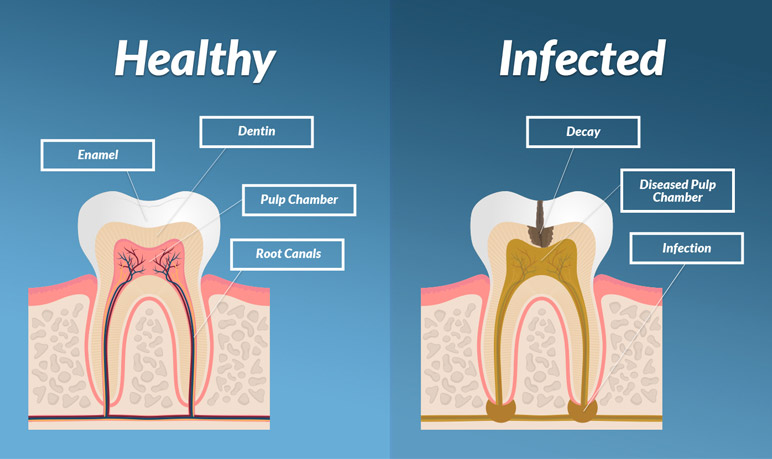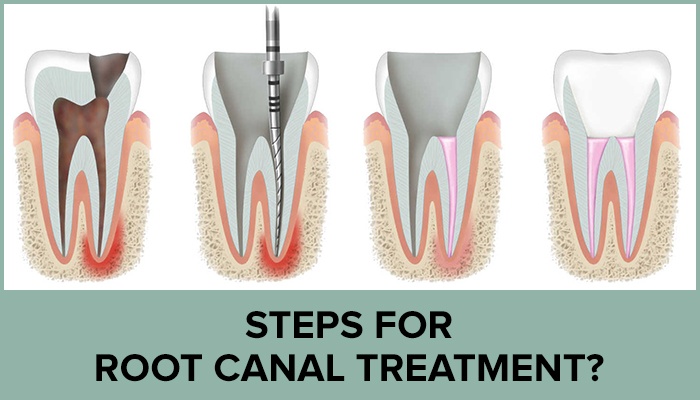When you experience discomfort and severe pain in your tooth, you may be curious if you need a root canal treatment. Your dentist may recommend a root canal treatment procedure if your tooth is experiencing swelling, gum infection, tenderness, gum bolls, severe pain, and sensitivity to cold and hot substances. This procedure is also known as Endodontic treatment.
Has your endodontist recently said that you need root canal treatment? If yes, you are one million Americans that use this endocentric procedure to treat and save their teeth every year. But what should you expect during the root canal procedure? This post will discuss root canal treatment to ease any fears you might have before you get the procedure.

Root Canal Treatment Procedure Explained
Dentists recommend a root canal procedure, also known as an endodontic treatment to remove the infected pulp to save your damaged or infected teeth. It helps to prevent the removal of teeth every time they are damaged or infected.
Pulp is simply what keeps your tooth alive because it contains blood vessels and nerves. When a dentist notes an infection in your pulp, he may recommend root canal treatment to ward off future re-infections. Here are the different root canal treatment steps you can expect in your next dental appointment.
How a Root Canal is Performed Step by Step
A preliminary dental procedure to eliminate the source of infection and the decay inside the tooth is crucial, plus determining whether the affected tooth and surrounding can be restored. If your infected tooth is linked to gum disease, it could be more daunting to restore the tooth. A root canal treatment is simply a four-step process that also involves the removal of the temporary filling. Your endodontist can perform the procedure successfully over two appointments.
Step 1: Diagnosing the Infected Pulp
Your dentist will first examine your teeth. Then may take one or two X-rays to know the extent of inflammation and tooth decay. Besides, they can perform a sensitivity test to see if you experience discomfort or pain when your biting surface comes into contact with sweet, cold, or hot stimuli.
Your general medical practitioner will send you to an experienced dentist once he has identified the problem causing toothache because they require advanced technology to understand the situation entirely. An experienced endodontist will use advanced X-rays and digital imaging to confirm that they needed a root canal procedure for the tooth.
Using a needle, the dentist will use local anesthesia to numb the tooth and surrounding tissues. If your pulp is inflamed, it may take some time for it to get numbed, but your endodontist will not start the procedure until it is. After local anesthesia numbs your tooth, the dentist may put on a dental dam, a small rubber-like material that separates infected teeth to keep them dry and clean. This sheet of rubber substance (also called dental dam) isolates the tooth that needs root canal treatment by covering other teeth in your mouth.
Step 2: Remove the Infected Pulp Inside Tooth
The next stage is when a dentist drills a hole on the top of the tooth to eliminate the bacteria and the pulp. This will help your dentist to access the pulp chamber and root inside of the tooth. He/she will then use surgical tools to clean out root canals, the pulp chamber, and possibly apply antiseptic/antibiotics to ensure no infection is left to cause pain. Your root canal is now super-clean and free from future infections.
They insert the files of varying diameters into the hole to reach the root tip and remove the infected root canals altogether. Your dentist will then use sodium hypochlorite or water to get rid of any leftover bacteria. The pulp was already dead, so getting rid of it won’t cause any harm to your tooth.

Step 3: Filling a New Root Filler
Once the pulp chamber is thoroughly dry and clean, your dentist will use a material called gutta-percha (rubber-like material) to fill the canals. It is placed inside the canals and later heated. The dentist compresses it to help it fit against the walls. Next, your endodontist will add an adhesive cement to seal the canals adequately. A properly sealed canal will keep bacteria away.
Step 4: Restoring the Tooth
After a few weeks, you need to book an appointment with an experienced dentist to remove the temporary filling of your tooth. The dentist will then put a permanent filling over the treated tooth, making your teeth as strong as it was before it got infected. This not only serves as a restoration to your affected tooth but also prevents further infection.
Why Do You Need a Root Canal Treatment?
Despite all the tales and rumors, root canal procedures are adequate to save your infected tooth and restore its role. If you are curious about booking a root canal, don’t fret, it is a painless treatment; especially if you understand what to expect by reading the root canal treatment step-by-step guide above.












